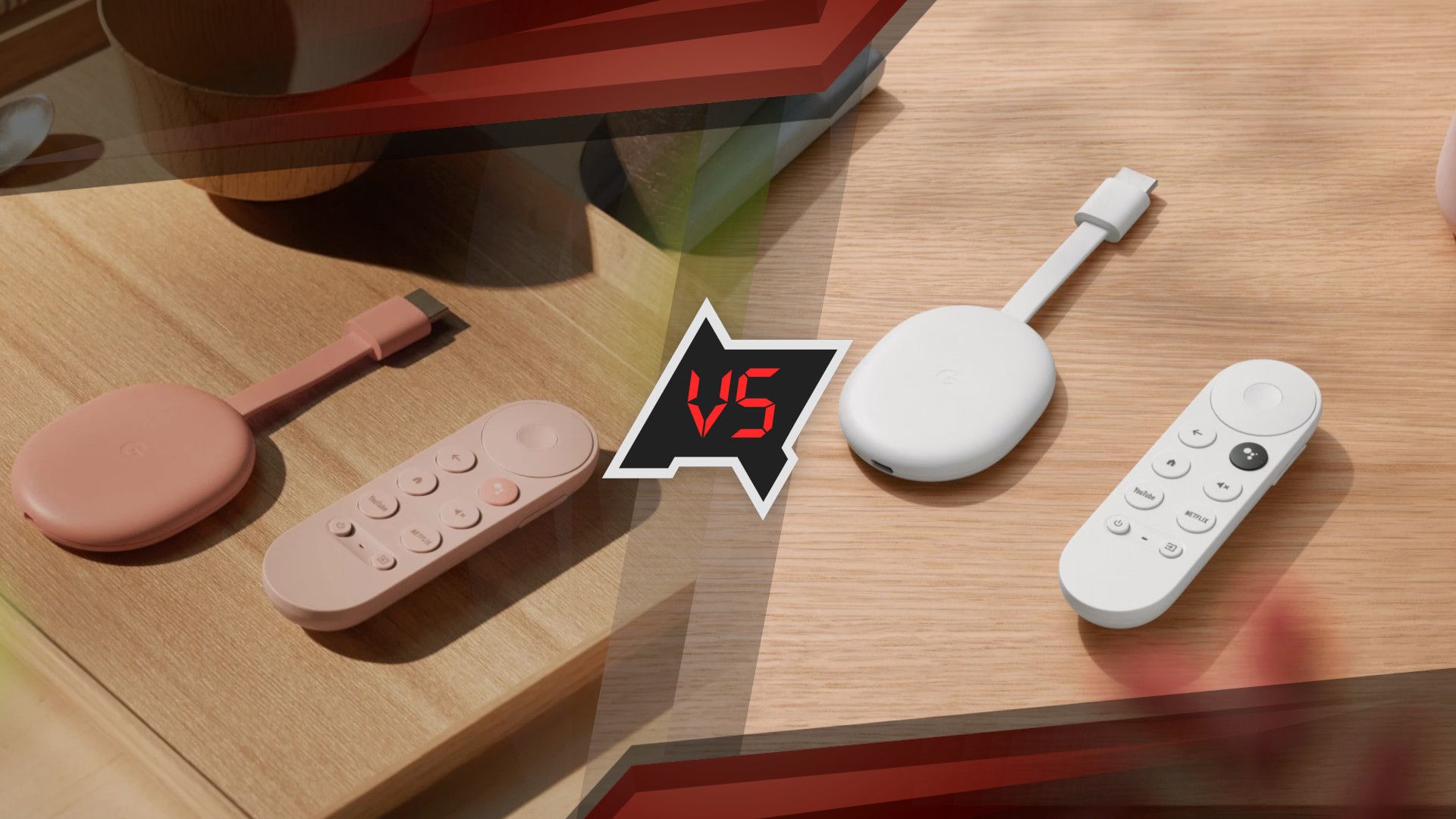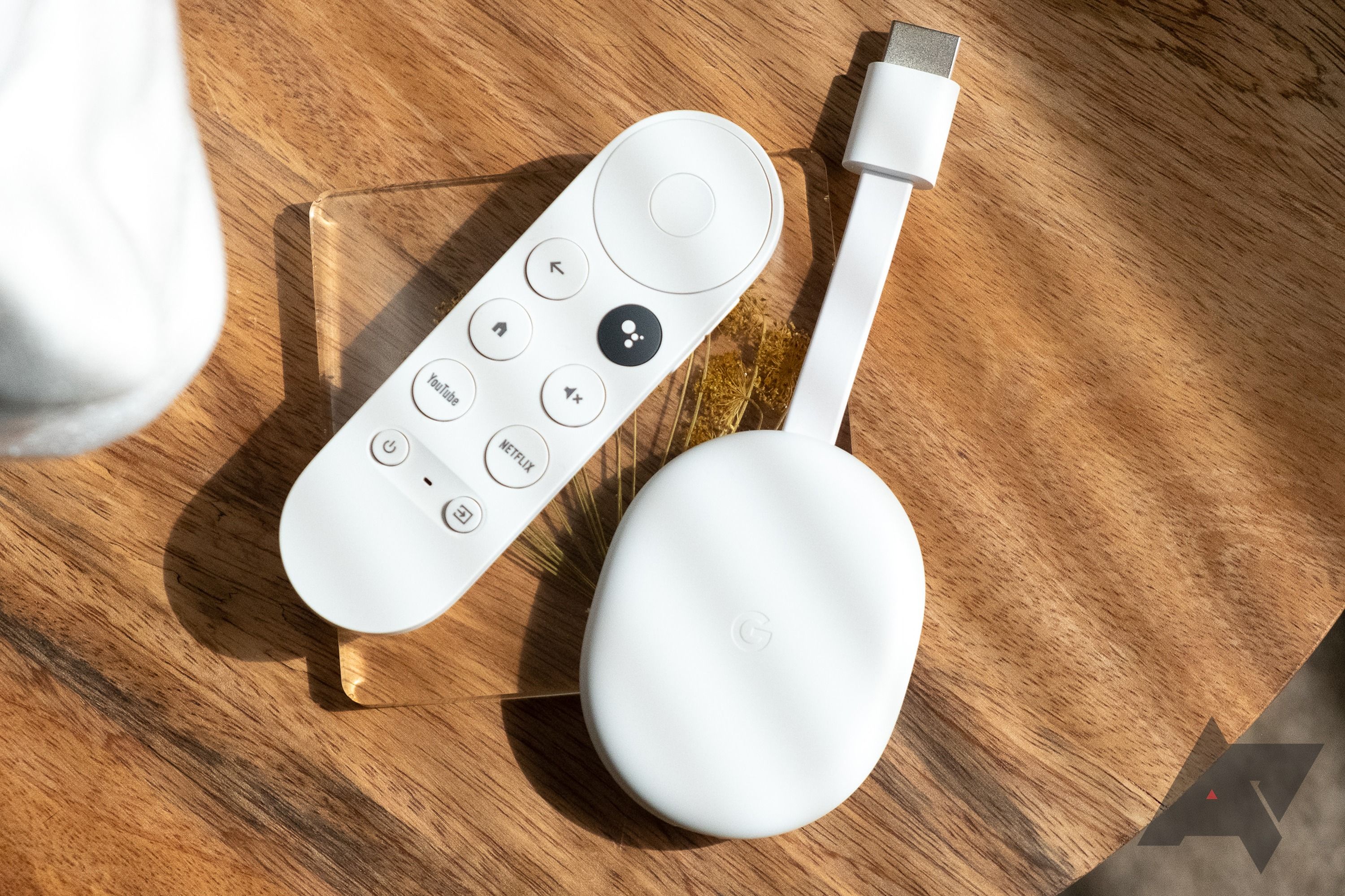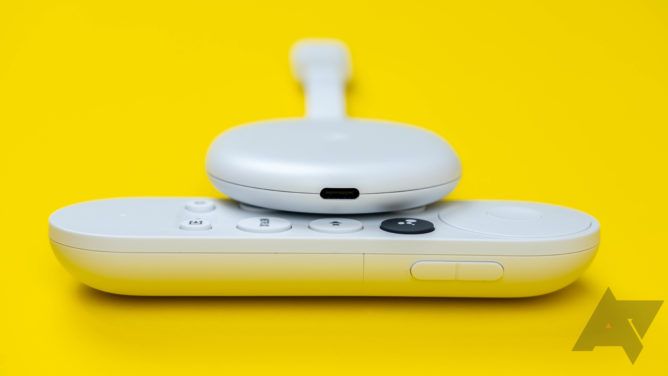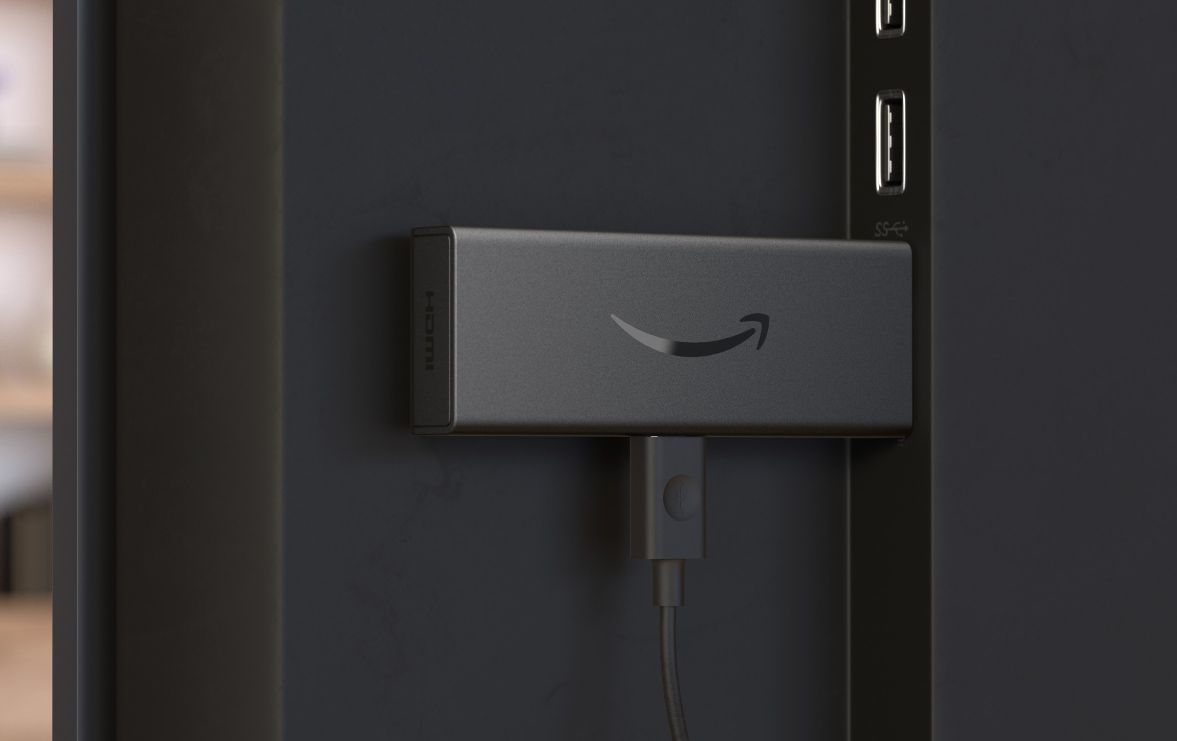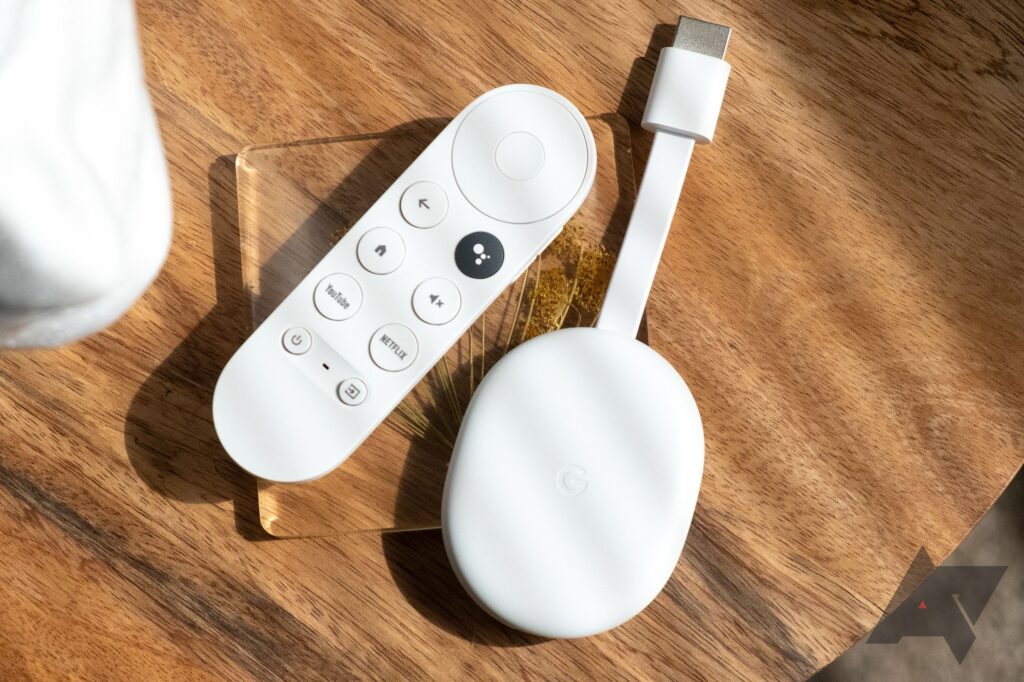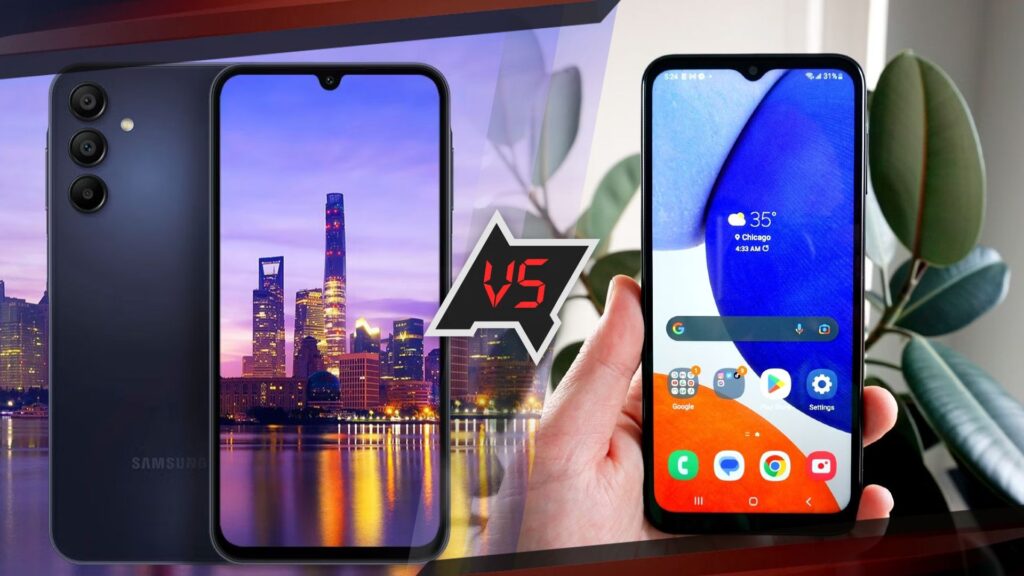-
Google Chromecast with Google TV (4K)
Best for 4K
The first-generation Chromecast with Google TV provides a decent smart TV experience at resolutions up to 4K for an MSRP of $50. With support for standards like Dolby Vision and Atmos, there’s not much else to want from an A/V perspective, but the Chromecast’s 8GB of storage space might not be enough if you want to install a lot of apps.
Pros- 4K resolution
- Dolby HDR support
- Multiple color options
Cons- $20 more expensive
- 8GB of storage isn’t enough
-
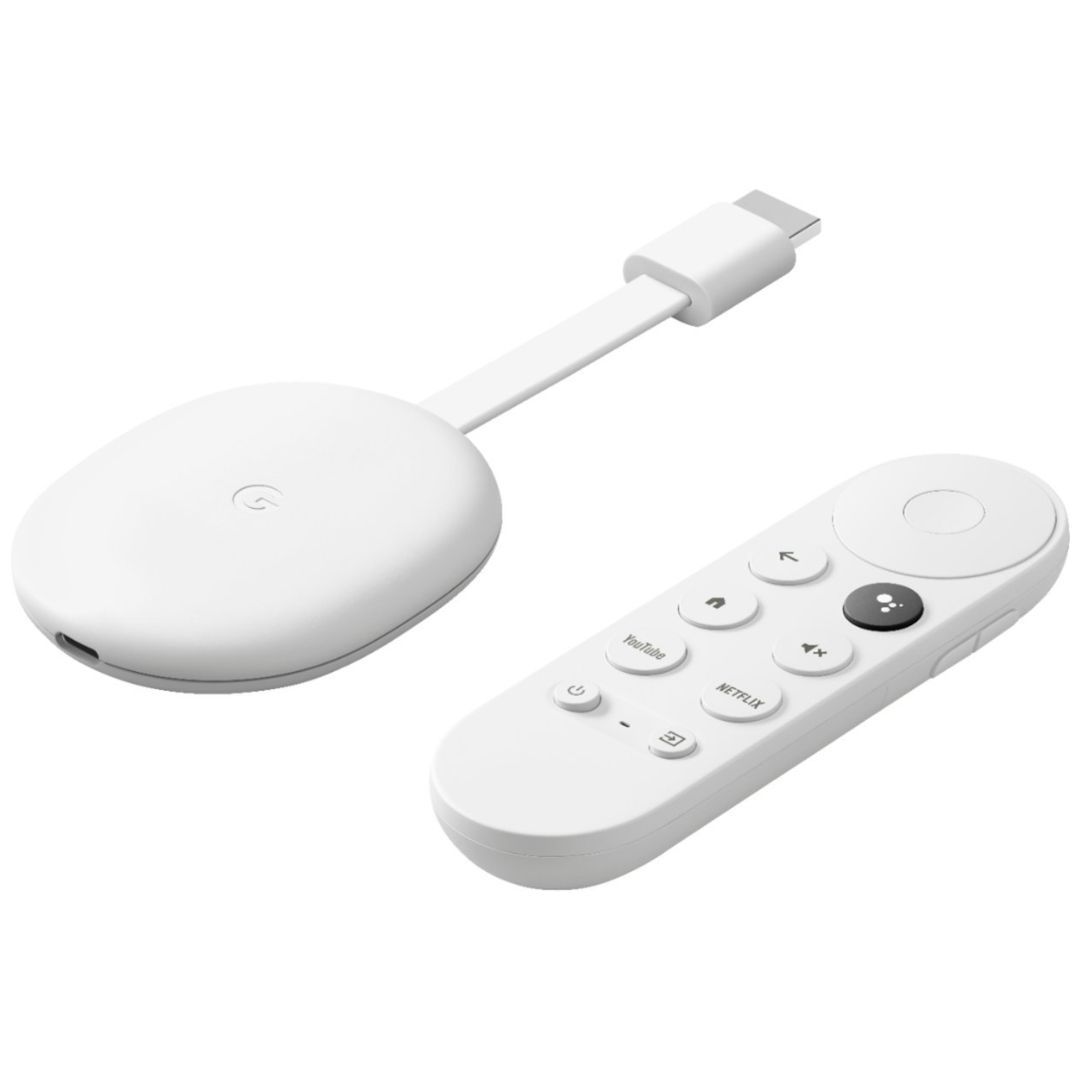
Chromecast with Google TV (HD)
Best for 1080p
The Chromecast with Google TV (HD) is essentially the same device as the 4K version, but it costs $20 less and tops out at a resolution of 1080p. It also doesn’t support Dolby Vision HDR, which the 4K model does. Otherwise, the experience here is identical. So if you’ve got a 1080p TV to which you want to add streaming capabilities, there’s not much harm in going HD to save 20 bucks.
Pros- Super affordable at $30
- Quick enough
- Same great remote
Cons- Resolution tops out at 1080p
- No Dolby HDR
- 8GB of storage isn’t enough here either
The Chromecast with Google TV is one of the best streaming devices to hit shelves over the last few years. Built with the incredible Google TV OS, not only does this web-connected peripheral make any “dumb” TV “smart,” but you’ll also be able to enjoy movie and TV show recommendations from Google’s powerful algorithms. Oh, and true to the Chromecast name, you’ll also be able to wirelessly beam pictures, videos, and other media from a compatible smartphone, tablet, or laptop to your TV screen.
Speculation is rife that a new Chromecast device is in the works, but there’s currently no release date or many details about the upcoming device — which means prospective buyers are probably better off grabbing one of the two current models rather than waiting in anticipation.
There are two versions of the Chromecast with Google TV to choose from: the Chromecast with Google TV (4K) and Chromecast with Google TV (HD). If you’re looking for a new streaming device, and you’re in a toss-up between these two models, we’ve put both modern Google TV Chromecasts side by side to help you pick the best one.
Price, specs & availability
The 4K-capable Chromecast with Google TV costs $50 at retail, though sale prices around $40 aren’t unusual. The 1080p Chromecast with Google TV (HD) has an MSRP of $30 but is often available for $20. You can get either just about anywhere that sells electronics: Amazon, Walmart, Best Buy, Target, and others all carry both versions.
-
Google Chromecast with Google TV (4K) Chromecast with Google TV (HD) Operating System Android 12 Android 12 Downloadable Apps Yes Yes Resolution Up to 4K Up to 1080p Ports HDMI, USB-C HDMI, USB-C RAM/storage 2GB/8GB 1.5GB/8GB Connectivity Bluetooth 4.2, Wi-Fi 5 Bluetooth, Wi-Fi 5 Integrations Google Home Google Home CPU 1.8GHz Cortex-A55 quad-core Amlogic 805X2 Audio codecs Dolby Digital, Dolby Digital Plus, and Dolby Atmos via HDMI passthrough Dolby Digital, Dolby Digital Plus, Dolby Atmos via HDMI passthrough
Design
The 4K and HD Chromecast designs are essentially the same — and pretty basic. You get a pill-shaped brick with a G logo etched into the top. A flat cable extends from the top of the brick with an HDMI cable on the end of it. The bottom of the Chromecast has a single USB-C port used to power the device. And since neither version can be powered by a USB port on the TV itself, Google includes a power brick with both models.
These two devices also ship with the exact same voice-enabled remote. It has eight buttons as well as a round disc for navigation located at the top. In addition, there are two preprogrammed buttons, one for YouTube and another for Netflix. The Chromecast 4K comes in Sky (blue), Sunrise (a Google Store-exclusive pink), and White. The HD version only comes in White, the same in the 4K model.
Software
Both the 4K Chromecast and the HD Chromecast currently run on Android 12. The Chromecast with Google TV (HD) launched with a newer version of Android TV than the 4K model had at the time, but due to an update to the 2020 model, both devices now run the same software. Finding shows on both is quick and convenient, but they offer too many recommendations for shows and movies.
Most major apps and services can be found on Android 12. If you don’t feel like navigating on-screen menus and apps, you can still cast your favorite content from your phone and bypass the interface altogether as long as the app supports the feature. As far as these Chromecasts go, they are identical in terms of software.
Performance
The most significant difference between Google’s two Chromecast with Google TV options is resolution. While 2020’s Chromecast with Google TV can output video in 4K at 60 frames per second, the newer Chromecast with Google TV (HD) can only manage 1080p in up to 60 frames per second. So if you’ve got a 4K TV, you’ll need to buy the older, $50 Chromecast with Google TV to take advantage of all those pixels. Meanwhile, TVs that top out at 1080p are a good match for the $30 Chromecast with Google TV (HD).
The HD version also doesn’t support Dolby Vision HDR, but it does come with support for HDR10 and HDR10+. You’ll have to check which HDR protocols your specific TV supports to determine if that matters for you.
There are also some differences under the hood, but they’re not things most users will notice. Thanks to using a different chipset, the 1080p model supports AV1 video decoding — due to hardware differences, the 4K model does not. AV1 is a video codec known to be especially efficient, so the newer 1080p Chromecast might use less bandwidth to stream video. In addition, the 1080p version has less RAM: 1.5GB, whereas the 4K model has 2GB. That sounds like a downgrade, but in our experience, it isn’t especially noticeable in normal use.
Storage space, a sore spot for many users of the original 4K Chromecast with Google TV, is also unchanged in the 1080p version. Both come with just 8GB, which can be limiting if you use a lot of different streaming services. Neither model has expandable storage built in, but either one will accept a compatible USB-C hub, so you can add additional storage using a USB-C hub if you need it.
Competition
Both versions of the Chromecast with Google TV are great, but these are just two products in the very big pond of streaming devices. Not to mention the recent news that there could be a whole new Chromecast with Google TV arriving online and in stores in the near future.
Noteworthy names like Roku, Amazon, Apple, and Nvidia offer competitive peripherals that may be a better fit for you; depending on what you’d like your streaming experience to be like, and how much you’d like to spend.
For years, Amazon’s lineup of Fire TV Sticks have been some of the most inexpensive web-connected devices around. With many models often on sale, Amazon’s Fire TV platform gets you access to many of the most popular movie and TV show apps, like Netflix and Disney+, in addition to Alexa-powered content searching and smart home controls.
Roku offers similar low-cost pricing on many of its Streaming Sticks, and thanks to the company’s open-armed attitude toward third-party developers, Roku devices have thousands of apps and games to choose from.
Nvidia’s Shield TV and Shield Pro have been around for a minute, and while they’re two of the more expensive streaming devices out there, Nvidia’s hardware includes access to all the most popular services, is compatible with Alexa and Google Assistant, and can be used as a host device for the amazing Plex media service.
Choosing the perfect model for your existing TV
While it may be tempting to rush out and purchase the latest and greatest Chromecast model, it is important to note the compatibility with an existing TV. While the 4K model has a better picture and a better sound quality, if the TV itself does not support 4K, there is no point in purchasing a 4K device because the TV will only display to its highest resolution. It should also be noted to check the HDR specs of your current TV because the HD Chromecast does not support Dolby Vision HDR.
It is vital to check the ports available on the current TV as an HDMI port is required. Most newer TVs have an HDMI port but if there are multiple devices hooked up or the television is a bit older, there may not be an HDMI port available.
Which is right for you?
The Chromecast with Google TV is one of our favorite streaming devices, but the fact that there’s two to choose from can make things a little difficult. Fortunately, the 4K version of Google’s web-connected streamer is going to make the most sense for the vast majority of folks; considering that most households are rocking 4K TVs these days.
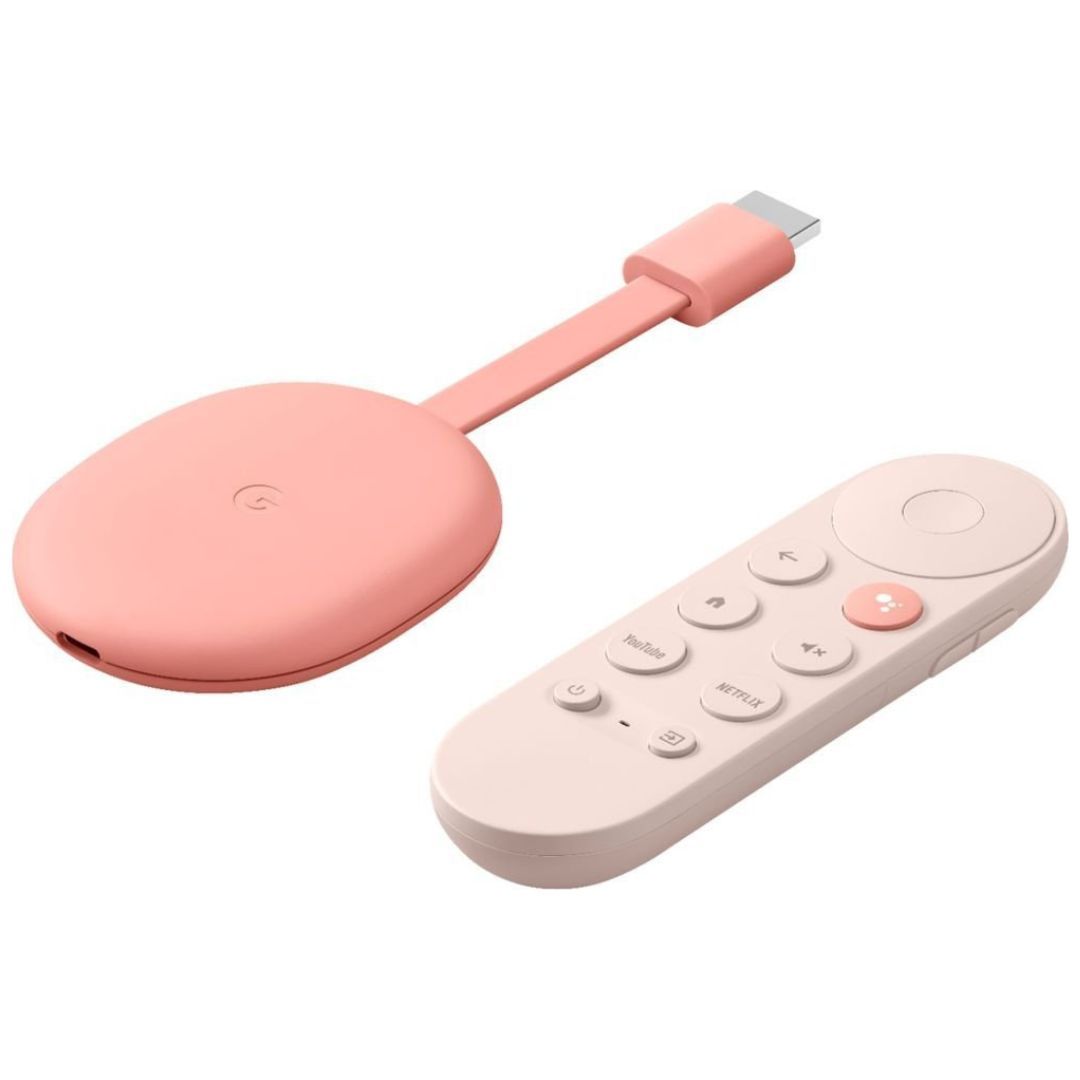
Google Chromecast with Google TV (4K)
Editor’s choice
Best for 4K
If you currently have or intend to get a 4K TV, the Google Chromecast with Google TV (4K) provides a well-rounded experience and is our overall winner. With an MSRP of only $50, it supports all major apps and standards, like Dolby Vision and Atmos.
If your screen is 1080p or lower and doesn’t support Dolby Vision, the $50 Chromecast with Google TV won’t have any advantages over the $30 HD model. So go for the Chromecast with Google TV (HD) if your TV or budget calls for it. The $30 model is also a good option for anyone who wants to try out Google TV before the new model is released, but does not want to sink a lot of money into it. Just be aware that even with a 4K TV, the HD Chromecast will only display at 1080p.

Chromecast with Google TV (HD)
Good alternative
Best for 1080p
1080P TV owners benefit from paying less for a device offering the same experience. At only $30, the Chromecast with Google TV (HD) is $20 less. You only give up the higher resolution as well as Dolby Vision HDR. You still get the same great remote and app support as the more expensive model.
